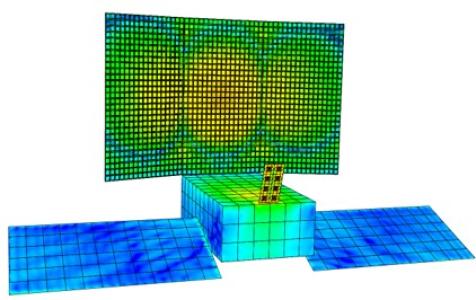Advanced Antenna Modelling Tool for Performance Verification and Diagnosis
Programme
GSTP
Programme Reference
GT11-020EF
Prime Contractor
TICRA Fond
Start Date
End Date
Status
Closed
Country
Denmark

Objectives
The objective of this activity is to provide a more efficient uncertainty quantification tool for antenna systems, including also interactions with the surrounding structures (e.g. spacecraft). This is achieved by implementing an efficient sensitivity analysis procedure, meaning it will investigate mathematical methods enabling more efficient sensitivity analyses, identify the most suitable one for antenna problems and implement the selected technique onto a state-of-the-art RF analysis tool.
Description
Some applications require a good assessment of the antenna performance in the presence of manufacturing and assembly tolerances. This is for example the case of radiometry, for which an accurate knowledge of the full pattern, even in the low side lobes, is required. This is also the case of radar systems where good knowledge of side lobe levels within determined angular ranges is required to ensure high resolution. In particular, when the antenna operates at lower frequencies, interaction with the platform cannot be neglected and has a non-negligible impact on side lobe level. Current antenna performance assessment in the presence of manufacturing and assembly tolerances require a large number of simulations with randomly distributed errors which requires heavy computational effort (Monte Carlo simulation).
Therefore, there is a need to both improve the computation of electrically large problems (e.g. antenna on a spacecraft) and investigate alternative sensitivity analyses procedures. The resulting tool could also be of relevance as a diagnosis tool to verify if the deviations observed between simulation and measurements, when available, are in line with the anticipated tolerances. In fact, significant progress has been reported in the applied math community within the area of uncertainty quantification. These new techniques are designed to provide the full conditional distribution function of the quantity of interest, e.g. radiation patterns, directivity, etc., even when some of the input parameters are not known exactly.
The proposed development should lead to an antenna design tool where uncertainty quantification techniques are fully integrated and can be invoked for all results of interest. In order to maximize the impact of the new approach, the techniques should be integrated into an existing state-of-the-art software for analysis of antenna systems, including relevant surrounding structures such as a spacecraft for on-board systems. The uncertainty quantification should be able to assess variations in the feed geometry, the antenna geometry (e.g. array of feeds, reflector configuration), the platform, or all the above at the same time. It is expected, that uncertainty quantification techniques may also necessitate an acceleration of some of the analysis algorithms used by the tool. These updated analysis algorithms will also extend the range of antennas that can be analysed by the tool.
Application Domain
Earth Observation
Technology Domain
7 - Electromagnetic Technologies and Techniques
Competence Domain
5-Radiofrequency & Optical Systems and Products
Initial TRL
TRL 3
Target TRL
TRL 5
Achieved TRL
TRL 5
Public Document
Executive Summary
